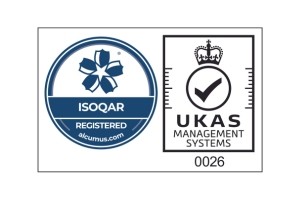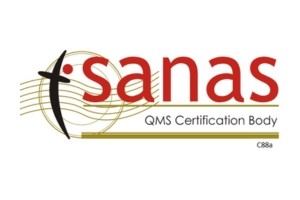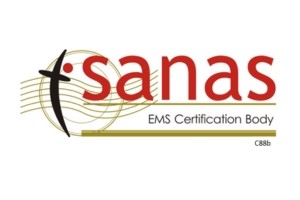Improvements are essential for businesses in a climate of competition, market rivalry and the global economy. Identifying improvements – by gaining an understanding on how efficient and effective your current processes are – will help your company grow and expand. The first step in correcting any problems is identifying the processes in your business that can be more productive and efficient.
The majority of ISO Standards requires you to demonstrate that your business is identifying, assessing opportunities for improvement.

If lack of identifying improvements were a crime, would there be enough evidence to have you convicted beyond reasonable doubt?
Identify opportunities for improvement
This stage of the Business Process consists of analysis the current processes and identification of problem areas as well as potential improvements. Factors such as the need to accommodate regulatory changes, trade security issues, and a drive to ensure information arrives in advance of the arrival of goods so as to reduce delays, can lead to necessary changes.
Different factors drive organisational improvement, such as the need to fasten and simplify processes by reducing duplication’s and delays, the automation of parts of the process, the use of digital data rather than paper document, organizational changes, new or changing regulatory requirements, and the introduction of new and modernized procedures, such as pre-arrival clearance.
Continuous improvement is an organized approach to identifying opportunities for improvement that can help an organization meet its goals for increasing profits, reducing costs, and accelerating innovation. Opportunities also enhance the quality of a product or service, improve safety, and result in happier customers, patients, and staff.

Opportunities for improvement exist in every company, in every job, in every workflow. Organizations that recognize this fact and engage their entire workforce in identifying those opportunities work to create a culture of continuous improvement. By engaging front-line workers in improvement efforts, organizations are able to improve on a more granular level than is visible to managers and senior leaders.
Opportunities for Improvement Should: Align to Your Business Goals
It is the responsibility of senior leaders to determine the overarching organizational goals, which managers and staff then work to achieve using continuous improvement.
Deliver Results It is important that continuous improvement results in a measurable impact, thereby proving the value of an investment in improvement and engaging employees and leaders in future efforts. This means that key performance indicators for each target opportunity should be identified early so that the end result can be assessed.
Drive Innovation Your continuous improvement program should bring new ideas to old ways of doing things. Sometimes a process can be tweaked to gain improvement, while other times a drastic change may be required. Continuous improvement opens the door to creativity that results in innovation.
The Top Ten Areas for Improvement in our modern environment.
- Culture of fear
- Lack of communication
- Silo building
- Resistance to change
- Lack of camaraderie
- Bureaucracy
- Micromanagement
- Ultra competitiveness within the group
- Stifling of creativity
- Balance sheet bias
Some simple ways to start making improvements!
- Eliminate the culture of fear: Promote constructive discussion up and down – managers and leaders need to have an open mind to subordinates thoughts and ideas. Subordinates should be able to speak freely with managers without fear of reprisal (now or in future) or being black labelled. Create a culture where no question is stupid and no idea is too crazy to explore either up or down the org chart! Managers and leaders, please allow people to speak even if you disagree with them!!
- Improve communication – don’t rely on email, text, and phone only. Talk face to face, gauge body language and expressions, and be human with each other. Walk down the hall. Over communicate and listen well. You have two ears and one mouth, use them is this proportion! Be empathetic to others views!
- Tear down silos – promote cross functionality, don’t allow silos to be built. Challenge silos all the time. Get involved in other areas to understand other roles and understand what it is like to walk “in their shoes”. Do other jobs in the organization to develop situational empathy.
- Reduce resistance to change – this is a tough one, as many people, including many senior business leaders, see change as costly and risk laiden! Imagine if humanity hadn’t changed through the course of history. The complexion (and complexity) of our world would be very different today. The key to change is that it must have a tangible and measurable benefit! This is why humankind has changed! Collect and present the data in a format that is understandable by the decision makers. Sell the idea by being passionate about it!
- Promote work friendships – promote social activities inside and outside of work. Promote and have fun with teams. In most cases, a team will generate the best results. Reward people, either with simple gestures (lunches), time off early, etc. as these simple acts of kindness will go a long way to enhancing moral and performance. Understand that lives and events happen outside of work, and don’t often wait for 5:00 pm.
- Eliminate bureaucracy and impediments to success – eliminate steps, levels etc. to getting things done. Don’t put up roadblocks to progress. Allow all levels some freedom to decide and proceed, with guidance, not an iron fist or dated and complicated policies.
- Put a lid on micromanagement – give employees the freedom to explore, create, innovate, excel and don’t tell them how to do it. Your job is to lead and guide, not order and direct. Let employees transcend what they are good at, the results will naturally follow! We are all here because we made it through a rigorous selection process and were presumably the best fit! Make sure that the label remains!
- Do not encourage ultra competitiveness within the group – resist the urge to outshine the “other guy or girl”. Understand that everyone, if focused, creative and energetic, will have multiple times to shine in their careers and be the “Employee of the Month”. Realize that each shining moment runs along a continuum of business growth, and no one works in strict isolation. One moment leads to another and remember to give praise! Promote competition with the real competitor!
- Avoid stifling of creativity – make sure that any ideas, no matter how crazy they may initially seem, are given a fair shot. Imagine if Einstein had shoved his thought experiments back in the top drawer of his desk at the patent office. Ideas often behave in a domino manner, with one exceptional or crazy idea leading to many others.
- Resist the bottom line temptation and balance sheet bias – Corporate balance sheets are important, but are not the whole story. Create an employee balance sheet. Count employee debits and credits. Count acts of kindness. Count employees when they have “AHA” moments! Count employees who go above and beyond. Get 360 feedback on employees!
What are your opportunities?
Join our mailing list to receive upcoming posts: http://www.isoqar.co.za/





